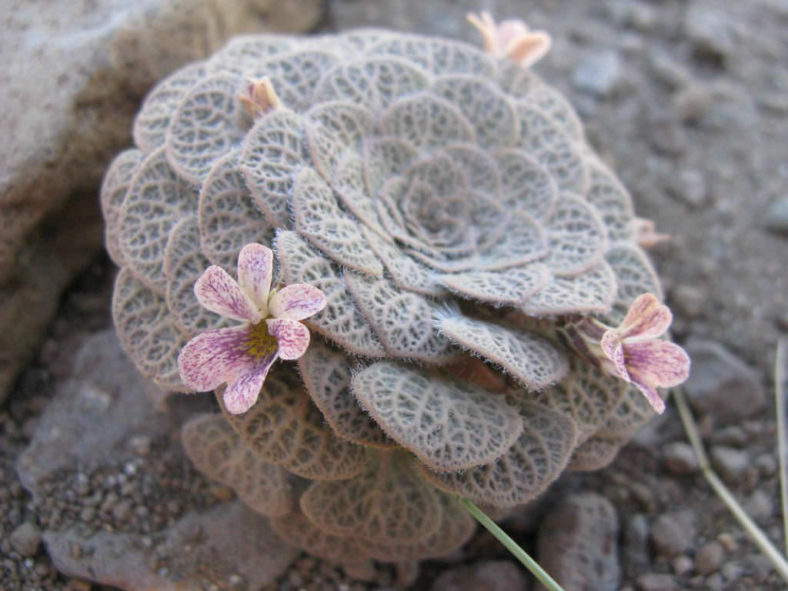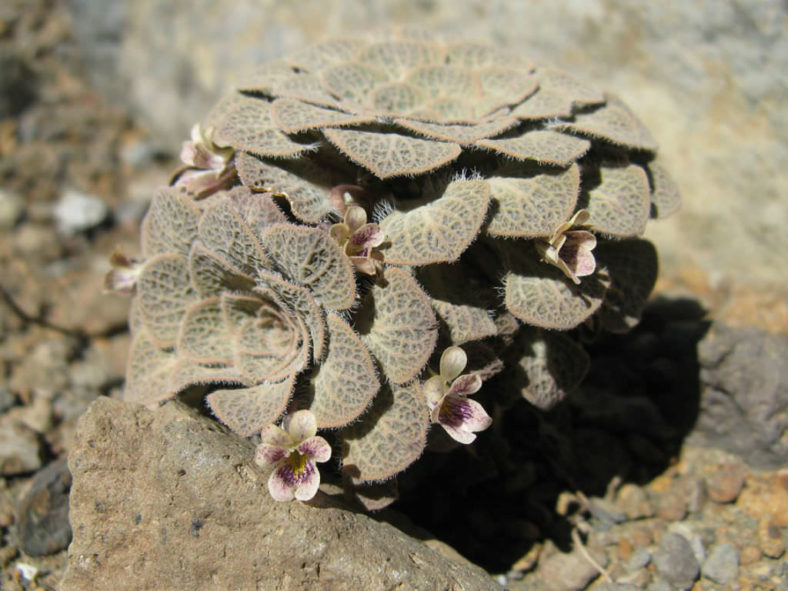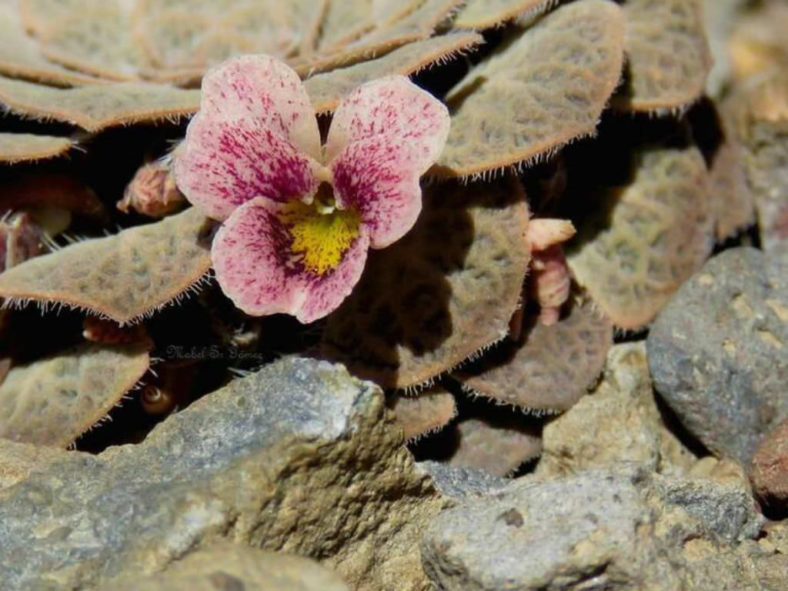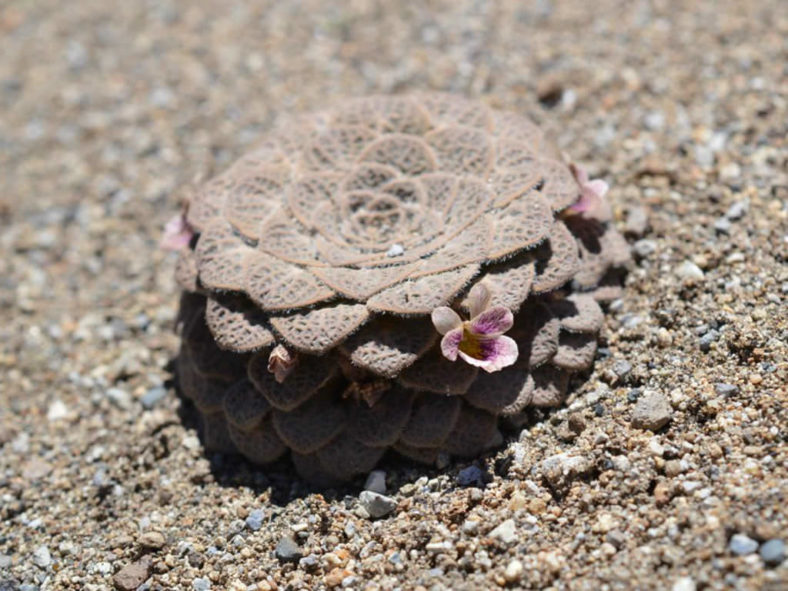Scientific Name
Viola trochlearis J.M.Watson & A.R.Flores
Scientific Classification
Family: Violaceae
Subfamily: Violoideae
Tribe: Violeae
Genus: Viola
Etymology
The specific epithet "trochlearis (tro-klee-AIR-is)" means "shaped like a pulley-wheel" and probably refers to the shape of the rosette.
Origin
Viola trochlearis is native to Argentina (Neuquén).
Description
Viola trochlearis is an annual or short-lived perennial that forms rosettes of soft, semi-succulent, beautifully textured leaves. The rosettes are dome-shaped and can grow up to 3.2 inches (8 cm) in diameter. The leaves are sand-colored with fine hairs around the edges.
From spring to early summer, Viola trochlearis produces white flowers with a mottled purple center fading to the petal edges and a yellow throat.
This species is a Rosulate Viola that belongs to the Volcanica group.

How to Grow and Care for Viola trochlearis
Rosulate Violas have a reputation for being difficult to keep alive. Therefore, cold conditions, soil containing adequate nutrients, and as much light as possible are essential.
Soil: They grow in relatively bare, loose soils, often volcanic in origin.
Hardiness: Viola trochlearis can withstand temperatures as low as 0 to 50 °F (-17.8 to 10 °C), USDA hardiness zones 7a to 11b.
Propagation: Rosulate Violas are grown only from seed and with some patience.
The main problem with these plants is etiolation, caused by a lack of light, which results in the elongation of the compact rosettes. However, it is known that some of the seedlings will quickly etiolate while others will not. So, there is some scope in selecting Rosulate Violas that are more likely to grow satisfactorily in cultivation.
Learn more at How to Grow and Care for Rosulate Violas.
Toxicity of Viola trochlearis
Violas are nontoxic for humans and pets. Both the flowers and leaves are edible, fresh, cooked, or dried.
Links
- Back to genus Viola
- Succupedia: Browse succulents by Scientific Name, Common Name, Genus, Family, USDA Hardiness Zone, Origin, or cacti by Genus
Photo Gallery
Click on a photo to see a larger version.


